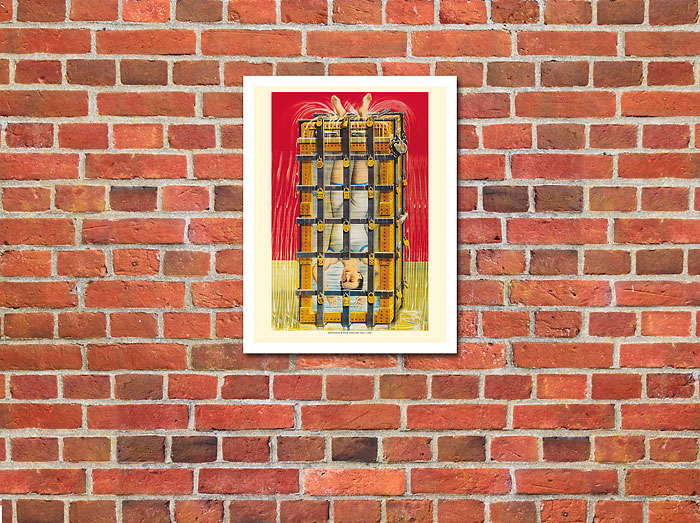
It is believed that Houdini eventually took possession of both these cells, though their ultimate fate remains unknown.

Miss Undina indeed had a WTC and Houdini himself had a WTC cell made for Miss Trixy, the escape artist who Houdini sponsored to compete with her. However, it is believed that he had any previous cells destroyed (to protect his secrets) as he had replacements built. Keep in mind that he performed the escape almost continuously from 1912 until the end of his life. Houdini himself had a number of cells built over his lifetime, and they went through some structural evolution as he improved the apparatus and his presentation of the escape. The stocks and metal frame are then dropped down over the lip of the cell and secured via the "flip-up" clasps.

This serves to securely lift the stocks and Houdini up and over the cell.

Houdini is scissored into the stocks, which are then placed inside this solid metal frame with ringlets. I concluded that the metal frame must be a stand-alone part. But if they were, the stocks wouldn't be able to "scissor" open (if you look closely, the metal frame crosses over the bottom of the hinge). I always presumed that the ringlets and metal frame were attached to the stocks. So my question is, if this is a working cell, how can the ringlets be built into the cell when the purpose of these ringlets is to lift the stocks? However, in examining the Radner cell, and, most critically, the burnt ruins in 1999, it's clear that the ringlets are built into this cell's superstructure. There are no ringlets attached to the cell itself. In photos, you can see Houdini hanging above the cell with ropes attached to these ringlets.

Those four ringlets that extend out from the four corners near the top of the cell just below the stocks.clearly these are where the block and tackle attaches to hoist Houdini into the air. Okay, here's something that I noticed just last night (I've been driving my poor girlfriend crazy with WTC talk, so I will instead drive my fellow Genii-ites crazy :p ).


 0 kommentar(er)
0 kommentar(er)
